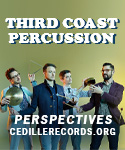Do You Recognize Yourself Here?
I’m sure that some of you have seen that famous little poster called “The Six Phases of a Project?” In case this escaped your attention until now, these are: (1) enthusiasm; (2) disillusionment; (3) panic; (4) search for the guilty; (5) punishment of the innocent; (6) praise and honors for the non-participants. It occurred to me recently that the life of a typical hard-core classical music record collector might be similarly categorized, and so I modestly propose the following:
Phase 1: Discovery. This is the most wonderful time of all, when the world seems full of an almost limitless number of masterpieces crying for your attention. The only constraint on your enthusiasm is your pocketbook, and you do whatever you can to purchase as much as possible as quickly as possible.
Phase 2: Expansion. You notice that the same music sounds different in different performances, and so you begin collecting multiple versions of your favorite works and start to get a sense for which artists offer interpretations that are most to your liking. You smile knowingly when friends and family members ask the perfectly logical question: Why do you need 15 different recordings of Mahler’s Second Symphony? Foolish people!
Phase 3: Fandom. Your taste in various performers leads you to fixate on one or two (or more) who you believe hold the key to indisputable artistic greatness. Now instead of purchasing multiple recordings of the same music, you’re after multiple recordings of the same music by the same artist at different periods (sometimes only a few days apart). You begin looking for pirate air-checks, private recordings, every scrap you can get your hands on, no matter if it sounds awful and your idol might have had a really bad day. You MUST have it anyway. You find great signficance in relatively tiny interpretive differences from one performance to the next.
The next four phases are not necessarily the inevitable outcomes of the first three, and not every hard-core collector experiences all of them, but most eventually manage at least one or two.
Phase 4: Nostalgia. This is a transitional phase: now comes that terrifying moment when you feel that you’ve heard it all. You’ve mastered the basic repertoire and know all of the great performers, those you like and those you don’t, and have reached the dreaded Great Works Saturation Point. What’s missing in your life is the thrill of discovery: that first flush of enthusiasm for each masterpiece as it first sounded when you originally encountered it.
Phase 5: Crusade. Happily salvation is at hand, in the form of dozens of fine independent labels specializing in all sorts of repertoire niches just waiting to be explored. There are two principal dangers with this phase (not including possible bankruptcy). The first is the inevitable and chronic lack of shelf space, a difficulty avoided as you make your first trips to that fabulous musical safety-valve, the used CD shop. The second danger is the tendency, similar to what happens in phase 3 above, to make exaggerated claims for music that really isn’t all that special or interesting just because its novelty excites your fancy. People will look at you strangely as you vigorously try to defend the assertion that Havergal Brian was England’s greatest composer, Sorabji a genius, or that Beethoven was a musical pygmy compared to Ferdinand Ries. This phase can go on for years, with literally thousands of discs passing through a typical collector’s hands in an endless crusade for that Holy Grail of classical music: the neglected masterpiece. If you seriously believe that the “three Bs” means Bax, Boughton, and Bach (W.F. of course!), then you’ve gone too far, and it’s really time to move on to Phase 6.
Phase 6: Renewal. One day, as you look through the letter B in your carefully alphabetized collection, you see those 40 or 50 Beethoven cycles that you haven’t touched in months, or even years. Playing the symphonies, just for old time’s sake, you’re stunned to realize that they truly are light years better than the second rate novelties that have constituted your main musical diet lately. So you move on to Brahms, Mozart, Handel, Mahler, Haydn, Bach, even (gasp!) Tchaikovsky, and Richard Strauss. It’s as if you’re hearing them all for the first time–and how alive, how refreshing they all sound! You fall in love with the great classics all over again, and you realize that the judgment of history isn’t always wrong. They don’t call ‘em “warhorses” for nothing!
Phase 7: Maturity. If you’re lucky, you may get this far. You realize that it’s not necessary to own 50 Beethoven cycles, 46 of which you never play, when you can be just as happy with 20 of them, 16 of which you never play. The complete harmonium music of Siegfried Karg-Elert, that Bulgarian Mahler cycle, 20 or 30 Gregorian Chant collections, six copies of the same historical recording reissued on six different labels in marginally varying (terrible) sound quality, your cherished 12 CD box containing pirate recordings of Sviatislav Richter’s “legendary” Spandau Prison concerts, and literally dozens of Baroque operas about which you remember nothing beyond the fact that they all sound exactly the same–all of these go straight to the used CD store where, like lost umbrellas, they will be returned to circulation to nourish the next generation of classical CD collectors. And as for you, well, you still purchase new releases, but discretely, selectively, and you take the time to enjoy every one.
David Hurwitz































